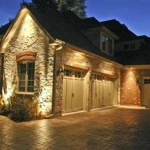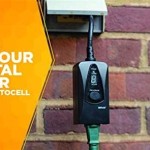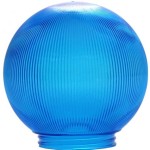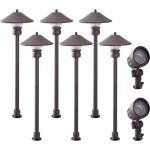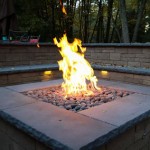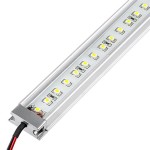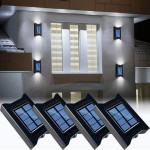How Long Should Outdoor LED Lights Last?
The longevity of outdoor LED lights is a significant factor for consumers and businesses alike. Understanding the typical lifespan of these lighting solutions, the factors that influence their durability, and how to maximize their performance is crucial for making informed purchasing decisions and ensuring a reliable and cost-effective outdoor lighting system.
LEDs, or Light Emitting Diodes, are semiconductor devices that produce light when an electric current passes through them. This technology offers several advantages over traditional lighting options, including energy efficiency, compact size, and, importantly, a prolonged lifespan. However, the actual lifespan of an outdoor LED light can vary significantly based on a combination of internal and external factors.
Expected Lifespan of Outdoor LED Lights
A primary selling point of LED lighting is its extended lifespan compared to incandescent, halogen, and even fluorescent bulbs. While traditional bulbs might last for a few hundred to a few thousand hours, high-quality outdoor LED lights are often rated for 50,000 to 100,000 hours of operation. This translates to roughly 5.7 to 11.4 years of continuous use, or considerably longer if used for a shorter duration each day. For example, if an LED light is used for 8 hours a day, it could potentially last for 17 to 34 years.
It is important to note the distinction between "rated lifespan" and actual performance. The rated lifespan is typically determined under controlled laboratory conditions, and it refers to the point when the LED's light output degrades to 70% of its initial brightness. This is often referred to as L70. The LED may still emit light beyond this point, but its effectiveness as a lighting source will have diminished. Therefore, the rated lifespan should be considered a guideline rather than an absolute guarantee of complete functionality.
The lifespan of outdoor LED lights is not solely determined by the LED chip itself. Other components within the fixture, such as the driver, the power supply, and the physical housing, also play a crucial role in determining its overall longevity. A failure in any of these components can lead to premature failure of the entire lighting fixture, even if the LED chip is still functioning correctly.
Factors Influencing LED Light Lifespan
Several factors can significantly impact the actual lifespan of outdoor LED lights, either positively or negatively. These factors can be broadly categorized as environmental conditions, operational factors, and product quality.
Environmental Conditions: Outdoor LED lights are subjected to a wide range of environmental stressors that can accelerate degradation. Temperature extremes, both hot and cold, can affect the performance and lifespan of the components. High temperatures can lead to overheating, causing the LED chip and other electronic components to degrade faster. Conversely, extremely cold temperatures can also affect the performance of the driver and power supply.
Moisture and humidity are also significant factors. Water ingress can cause corrosion and short circuits, leading to premature failure. High-quality outdoor LED lights are designed with specific Ingress Protection (IP) ratings, indicating their level of resistance to dust and water. Selecting a fixture with an appropriate IP rating for the intended environment is crucial for ensuring its longevity. For example, lights near a sprinkler system or in a frequently rainy area should have a higher IP rating than lights installed under a protected overhang.
Exposure to UV radiation from sunlight can also degrade the plastic and rubber components of the fixture, leading to cracking, discoloration, and eventual failure. While some outdoor fixtures are designed with UV-resistant materials, prolonged exposure to direct sunlight can still have a detrimental effect over time.
Operational Factors: The way in which outdoor LED lights are used can also affect their lifespan. Frequent on-off cycling can put stress on the components, particularly the driver, and can shorten its lifespan. While LEDs are generally more resistant to cycling than traditional bulbs, excessive switching can still have a negative impact. Similarly, voltage fluctuations and power surges can damage the electronic components, particularly the power supply. It is generally recommended to use surge protectors to help safeguard outdoor LED lights from voltage spikes.
Overdriving an LED, meaning operating it at a higher current than it is designed for, can significantly reduce its lifespan. While it may result in a brighter light output, it generates more heat, which accelerates degradation. It is crucial to ensure that the LED lights are operated within their specified voltage and current ranges.
Product Quality: The quality of the LED light fixture itself is arguably the most important factor determining its lifespan. Higher-quality fixtures are typically made with better materials, more robust components, and more sophisticated thermal management systems. The quality of the LED chip itself, as well as the driver and power supply, can vary significantly between different manufacturers and models.
A well-designed thermal management system is crucial for dissipating heat generated by the LED chip. Proper heat dissipation helps to keep the LED at a lower operating temperature, which significantly extends its lifespan. Fixtures with inadequate thermal management are more likely to overheat and fail prematurely.
The quality of the housing and other physical components also plays a role. A sturdy, corrosion-resistant housing can help to protect the internal components from environmental damage. Similarly, high-quality wiring and connectors can help to prevent failures due to corrosion or loose connections.
Maximizing the Lifespan of Outdoor LED Lights
While some factors, such as the climate, are beyond direct control, several steps can be taken to maximize the lifespan of outdoor LED lights. These measures focus on selecting appropriate fixtures, ensuring proper installation, and implementing appropriate maintenance practices.
Selecting Appropriate Fixtures: Choosing the right type of LED light fixture for the specific application and environment is crucial. Consider the intended use, the level of brightness required, and the environmental conditions the fixture will be exposed to. Look for fixtures with appropriate IP ratings for water and dust resistance. Consider fixtures made from durable, UV-resistant materials if they will be exposed to direct sunlight. Research different brands and models, and look for reviews and ratings from other users. Investing in a higher-quality fixture from a reputable manufacturer can often pay off in the long run with a longer lifespan and better performance.
Ensuring Proper Installation: Proper installation is essential for ensuring the safe and reliable operation of outdoor LED lights. Follow the manufacturer's instructions carefully, and use appropriate wiring and connectors. Ensure that the fixture is securely mounted and that it is properly grounded. Avoid installing fixtures in areas where they are likely to be subjected to physical damage. If unsure about any aspect of the installation process, it is best to consult with a qualified electrician.
Implementing Appropriate Maintenance Practices: Regular maintenance can help to extend the lifespan of outdoor LED lights. Periodically inspect the fixtures for any signs of damage, corrosion, or water ingress. Clean the lenses regularly to remove dirt and debris, which can reduce light output. Check the wiring and connectors to ensure that they are secure and free from corrosion. If any problems are detected, address them promptly to prevent further damage. Consider using a timer or photocell to control the operating hours of the lights, which can help to reduce their overall usage and extend their lifespan. In areas prone to power surges, installing surge protectors can help to protect the electronic components from damage.
In summary, the lifespan of outdoor LED lights is influenced by a complex interplay of factors. By understanding these factors and taking proactive steps to select appropriate fixtures, ensure proper installation, and implement appropriate maintenance practices, it is possible to maximize the lifespan of these lighting solutions and realize their full potential for energy savings and long-term cost-effectiveness.

Can Led Lights Be Used Outdoors Bpm Electric

How Much Energy Do Outdoor Led Lights Really Save Lighting Perspectives

Can You Use Led Lights Outside Gemstone

Outdoor Led Lighting The Advantages Gemstone Lights

The Advantages Of Outdoor Led Lighting

How Long Do Solar Lights Last 9 Tips To Longer

Diy Permanent Led Lights The Creative Mom

Guide To Exterior Lighting Commercial Led Outdoor

Diy Permanent Led Lights The Creative Mom

How Long Do Solar Lights Last Electronicshub
